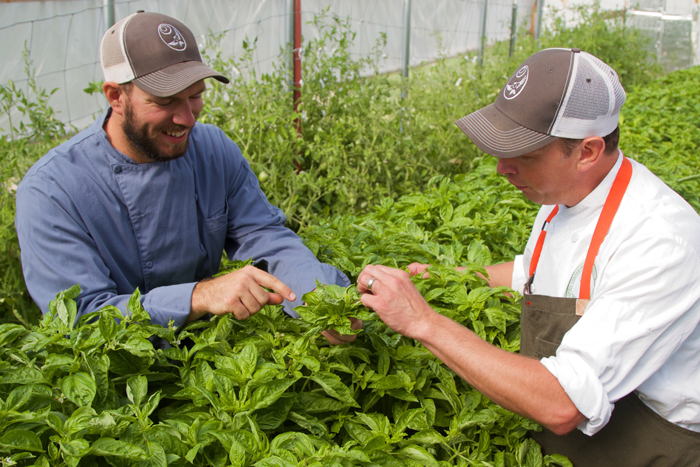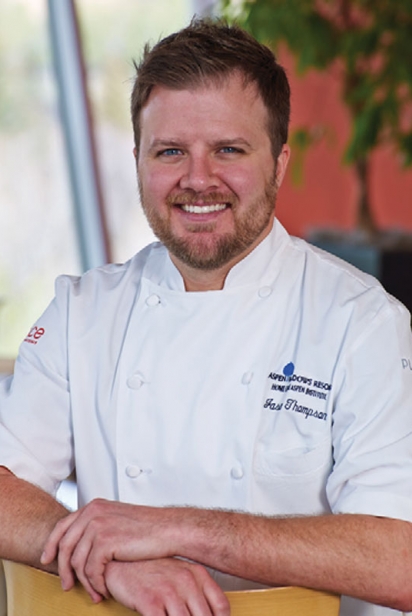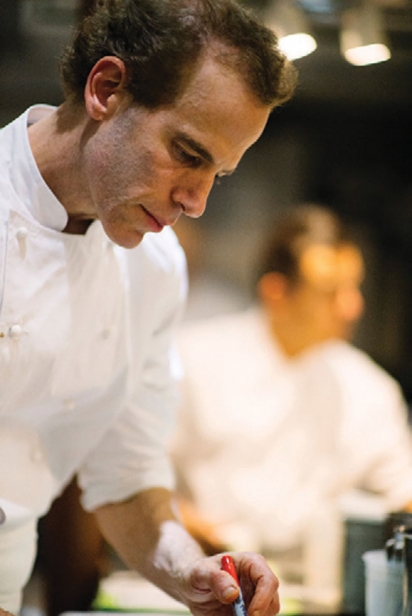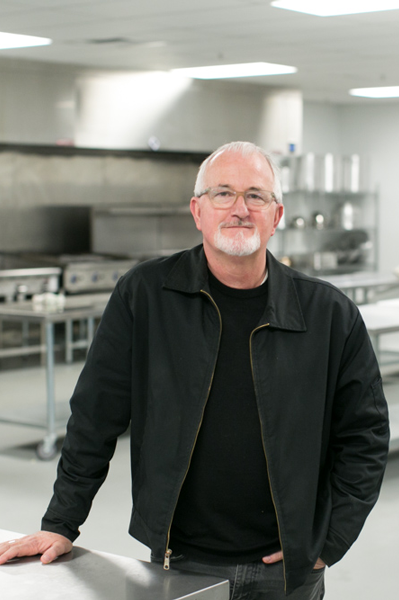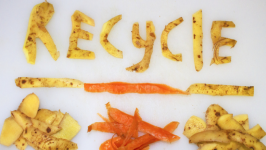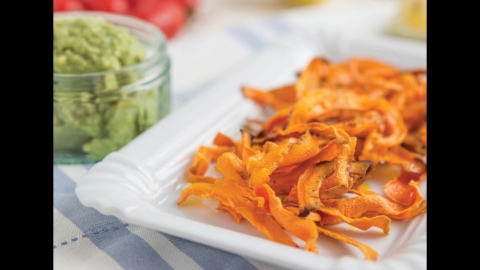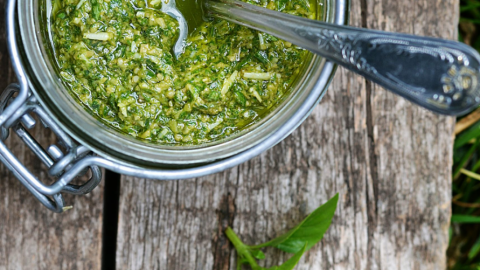Second Helpings - The Case for Food Waste: New culinary movement redefines fine-dining
Bug-damaged arugula, bacon end-cuts and meat scraps, bruised and ugly fruit and vegetables pulled from the bins and racks at Whole Foods: These ingredients might not sound very appetizing, but you’d be surprised by their potential for transformation.
Put into the hands of the right chefs, these seemingly unsavory cast-off food items can be repurposed into wholesome, delicious recipes, as well as a meal seasoned for moral and ethical tastes. Th at’s the idea behind a revolutionary culinary movement that not only reduces food waste by eating more and discarding less, but promotes the concept as a culinary adventure—with full disclosure on select restaurant menus.
The food waste movement has gained traction locally thanks to a small group of chefs, farmers and other food industry professionals. This summer at the Ideas Festival, Aspen Meadows Resort hosted two extravagant meals featuring menus made primarily with “organic/naturally imperfect products,” says Meadows Executive Chef Jason Th ompson.
“We felt the term ‘food waste’ might turn people off and give them the wrong impression,” he explains, while adding that Ideas Festival was an appropriate venue for a novel approach to food. “Utilizing food waste is often thought of as ‘dumpster diving,’ but that’s not what we did. Unless we told you we utilized something that would have typically been disposed of, you wouldn’t have been able to tell.
We wanted to make it glamorous and appetizing, and everything we prepared was fresh and healthy.”
Thompson worked with Jason Smith, director and chef at the Aspen Center for Environmental Studies’ (ACES) Rock Bottom Ranch, and Aaron McCallister, Whole Foods Roaring Fork associate team leader, to source ingredients and plan a menu that might have shocked some diners.
“It was based on utilizing items that would have normally been disposed of, items that suppliers were overstocked with and items that may have been bruised, over-ripe or simply ugly and undesirable,” says Thompson. “We also used a lot of products from our in-house operation. It’s important to note that most professional kitchens waste very little, but we took it to the extreme for these events and that’s really made us think outside the box about what is possible.”
The food waste movement takes root
In March 2015, The New Yorker ran a feature on celebrated chef/restaurateur Dan Barber of New York’s Blue Hill and Blue Hill at Stone Barns. A pioneer of the food waste movement, Barber described food waste as an affordable and efficient means of utilizing perfectly good ingredients that were otherwise headed to the compost pile or trash bin.
In the same article, Barber suggested that America is a country rich in food waste because our national larder has historically bulged with a cornucopia of foodstuffs. Th rowing away food violates a sense of frugality that Barber embraces in his popular Blue Hill Restaurant in New York City.
Another national leader in food waste is Robert Egger, founder of L.A. Kitchen, whose mission includes feeding the homeless and hungry on the streets of Los Angeles. “Every day in America, an estimated 40% of the food we produce is discarded,” states the organization’s website, “and 50% of that waste is nutritious fruits and vegetables. California throws out approximately six million tons of food every year, making it the largest single source of waste in the state.”
L.A. Kitchen is a 20,000-square-foot facility where Egger’s team works directly with farmers and wholesalers to collect produce that’s cosmetically unsalable. Th ose blemished ingredients are converted into healthy meals, snacks and food products for social services agencies across Los Angeles.
The meals served at the Meadows during Ideas Festival were inspired by the national food waste movement and, specifically, by The Rockefeller Foundation. Rockefeller’s YieldWise initiative (a program that supplies produce waste to the hungry in Kenya, Nigeria and Tanzania) calls for the same approach Barber and Egger are using in their states to convert food waste into nutritious, tasty meals.
Tackling food waste locally
“The Ideas Festival looks at issues around the world,” Smith says, “and The Rockefeller Foundation is a partner, so that led to us putting ACES together with the Meadows and Whole Foods to incorporate food waste at Ideas Fest. At the opening reception, which serves 700–900 people, half of the passed hors d’oeuvres we provided were from food waste, and ‘ugly fruit smoothies and fruit bars’ were also enjoyed by Ideas Festival attendees. The Meadows then did their own food waste lunch for all the participants.”
A specially designed breakfast also sourced entirely from food waste was held at the Meadows for 20 executives from Nestlé, Mars, Kroeger and other firms. “There were some powerful food brains in the room, and the entire meal utilized food waste,” Smith notes with pride.
The menu featured small “pullet eggs” from Rock Bottom Ranch, which come from chickens too young to produce fullsized eggs. The breakfast also utilized eggs blemished with stains on their shells, and cosmetically blemished greens.
For Smith, whose career in food has segued from his initial role as a chef into running an educational ranch and farm based on sustainable agriculture, the food waste events at the Meadows opened a creative tap that led to his pickling the thick stems of Swiss chard and serving them, along with other veggies, as part of a charcuterie plate for an ACES event.
“Between the kitchen and the ranch, we’re all about being thrift y. For soups we use carrot peels, onion tips and stalks and broccoli stems. We don’t feed onions or garlic to our chickens because it flavors the eggs, so we use those for soups.”
“It spurred a ton of ideas and made us realize the opportunities to explore utilization of food on a different level,” says Smith. “Now we’re using our kitchen as a food lab where we’re inspired to come up with new ideas all the time. We’re talking about a small scale here, but now we’re looking at schools, hospitals and elderly care facilities—all of which produce considerable food waste.”
The fact that 33 million tons of food end up in American landfills annually is a compelling reason to address the national tendency to waste. The collective conscience now resides with chefs like Dan Barber, social food activists like Robert Egger and local growers and chefs like Jason Smith and Jason Thompson.
Through such efforts, food waste may become part of a growing national menu that spells health for American consumers and respect for food sources, and embraces frugality. It also enlivens a creative and passionate culinary enterprise that takes perfectly good food out of the waste stream and converts it into delicious fare.
Hungry for more? Check out The Ultimate Guide to Cheap Green Living


